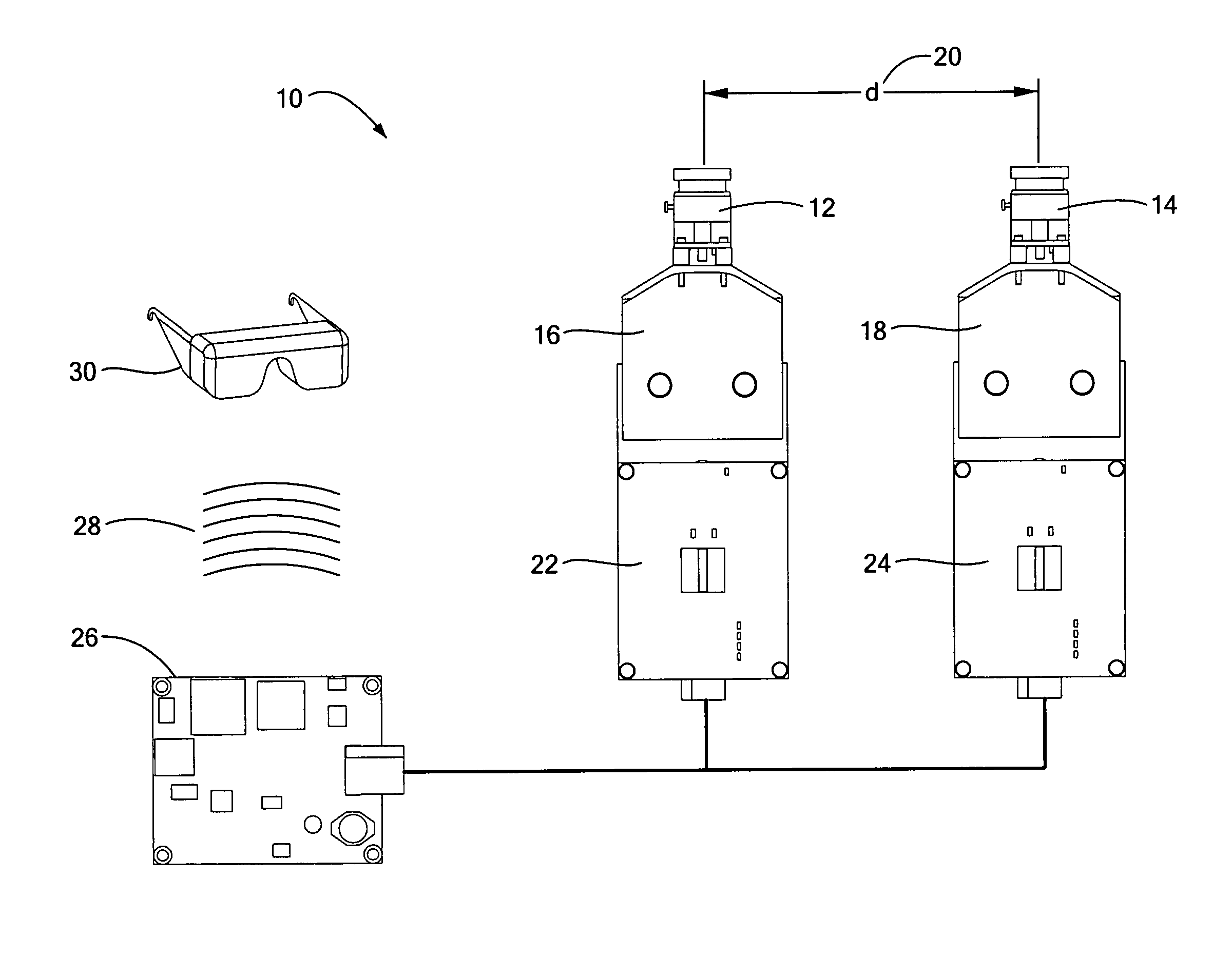Stereoscopic wide field of view imaging system
a wide field of view, imaging system technology, applied in the field of stereoscopic wide field of view imaging system, can solve the problems of suspect reliability, limited image capture speed, and significant performance limits on the frame-rate and shutter-rate of the system as well as the speed, so as to increase the scene width
- Summary
- Abstract
- Description
- Claims
- Application Information
AI Technical Summary
Benefits of technology
Problems solved by technology
Method used
Image
Examples
Embodiment Construction
[0033] The present invention provides a stereoscopic imaging system having a plurality of imaging devices arranged to capture an image. The images from each imaging device are combined to provide a wide field of view (FOV) image or a panoramic or omni-directional image that can be transmitted to an end user device, such as a head mounted display (HMD), monitor, or projection device. An imaging device is typically considered to be one or more optical stages to focus a range of electro-magnetic waves from a given field of view onto an imaging mechanism, which may be a charge-coupled device (CCD), a Complementary Metal Oxide Semiconductor (CMOS) optical sensor, traditional film, a microbolometer infrared array, or some other mechanism to capture and store optical information. An imaging device may also be referred to as a camera herein. The number of imaging devices is selected based on the application and is directly related to the pixel density of the optical sensor and the field of ...
PUM
 Login to View More
Login to View More Abstract
Description
Claims
Application Information
 Login to View More
Login to View More - R&D
- Intellectual Property
- Life Sciences
- Materials
- Tech Scout
- Unparalleled Data Quality
- Higher Quality Content
- 60% Fewer Hallucinations
Browse by: Latest US Patents, China's latest patents, Technical Efficacy Thesaurus, Application Domain, Technology Topic, Popular Technical Reports.
© 2025 PatSnap. All rights reserved.Legal|Privacy policy|Modern Slavery Act Transparency Statement|Sitemap|About US| Contact US: help@patsnap.com



